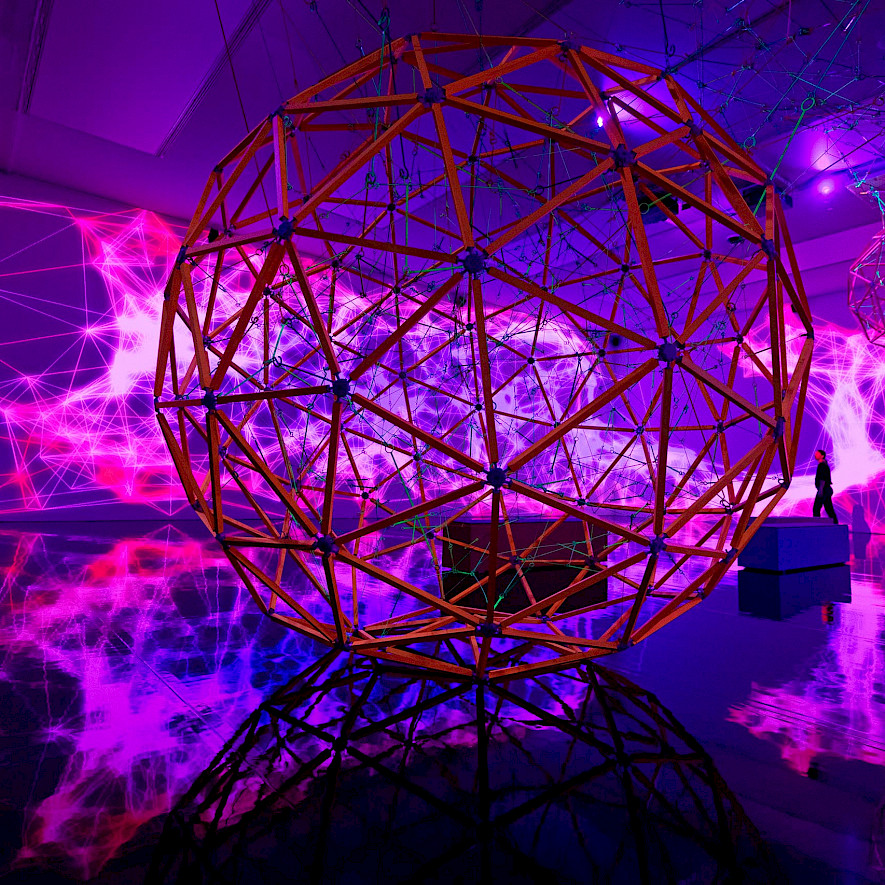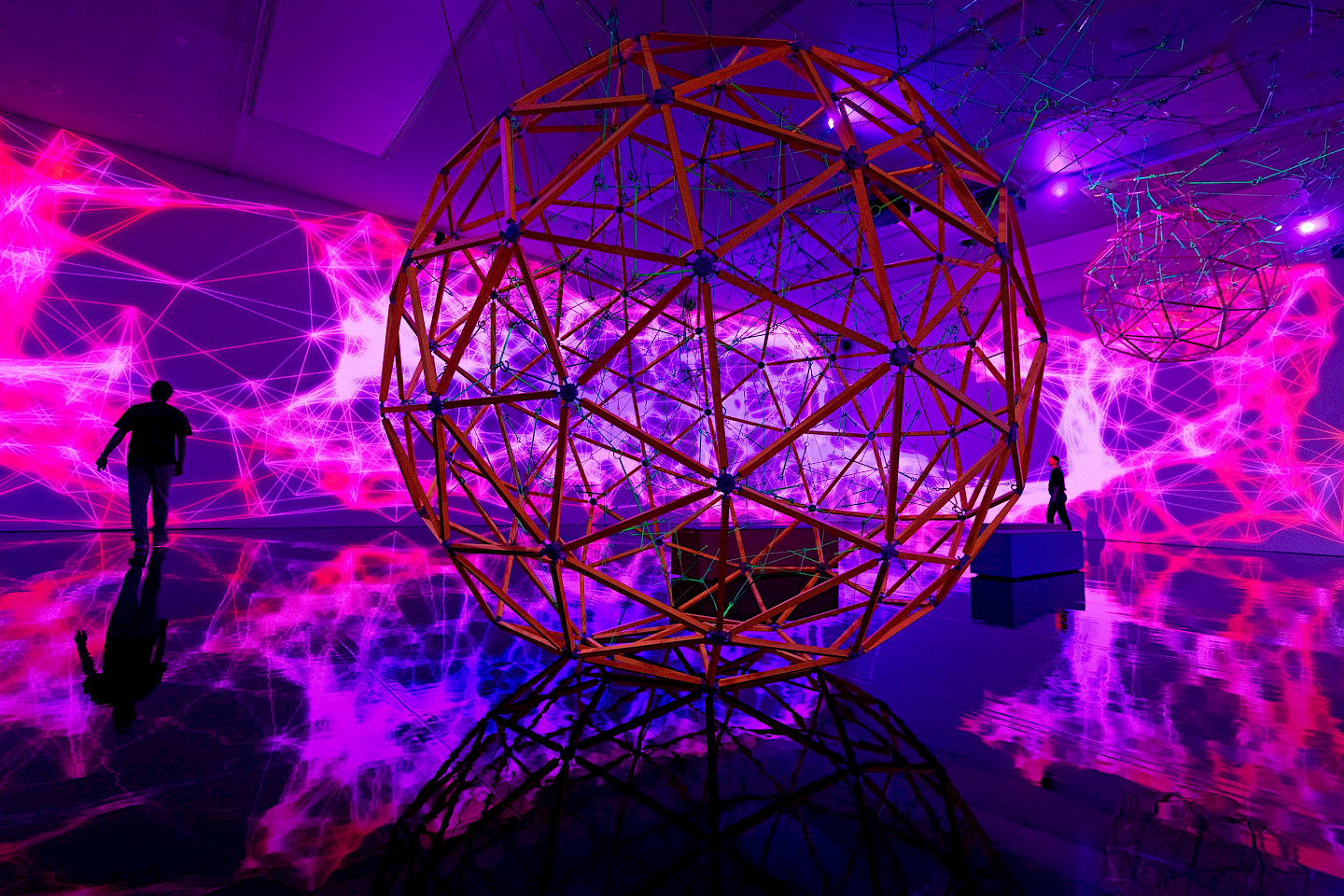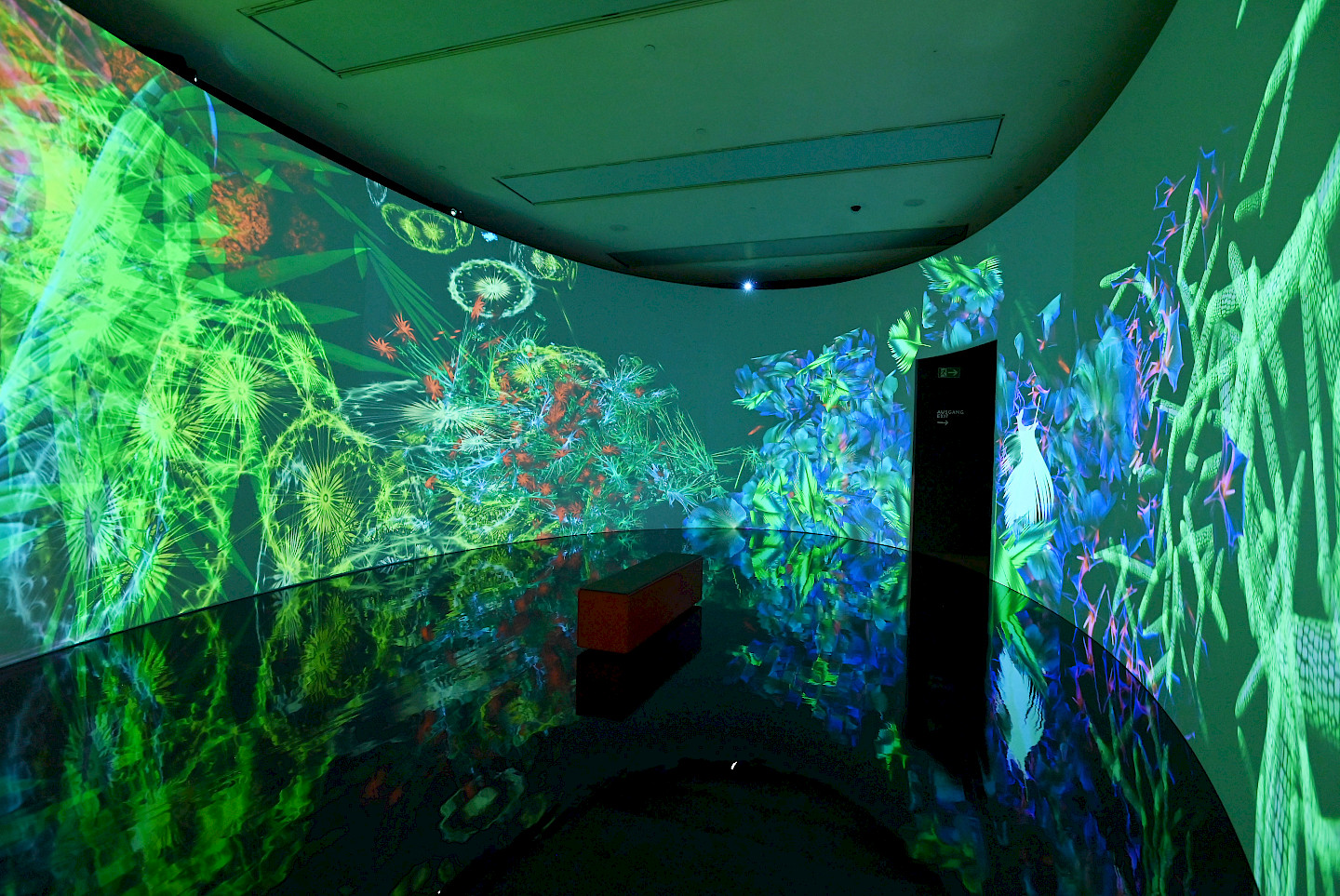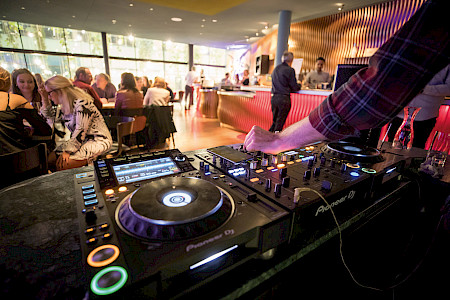Since the 1980s, Miguel Chevalier has used the computer as an artistic medium and experimented with new technologies such as artificial intelligence. His work is in dialogue with art and cultural history and, despite its digital roots, remains closely linked to the sensory experience in real space. Around 120 works – sculptures, drawings, videos and installations – invite interactive participation. Together with natural history objects, a multi-layered experience between nature, technology and art is created.
The artist Miguel Chevalier has been working closely with the composer Jacopo Baboni Schilingi for many years. For the exhibition, Schilingi created two generative soundscapes that refer to works by Johann Sebastian Bach. The music for "Complex Meshes" takes the "Agnus Dei" from the Mass in B minor (BWV 232) and four organ fugues as its starting point. From this, a computer develops endlessly varying electronic melodies: motifs are recombined, fugue elements are interwoven with synthesised sounds. In the absence of visitors, a gentle mood is created, while the interaction of the audience intensifies the rhythm. Image changes in the projection are accentuated by low tones.
"Meta-Nature AI" is also based on Bach's music – this time on the cantata BWV 106. Schilingi's score is realised completely digitally: A generative programme translates the movement and growth of the virtual plants into sound accents that are constantly changing and thus musically reflect the liveliness of digital nature.



